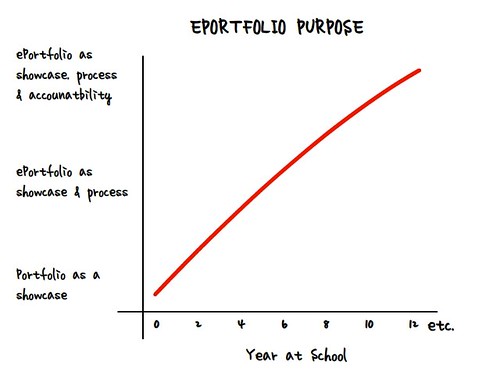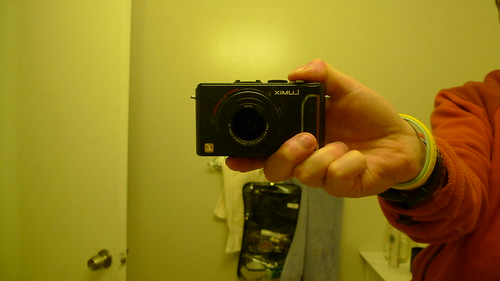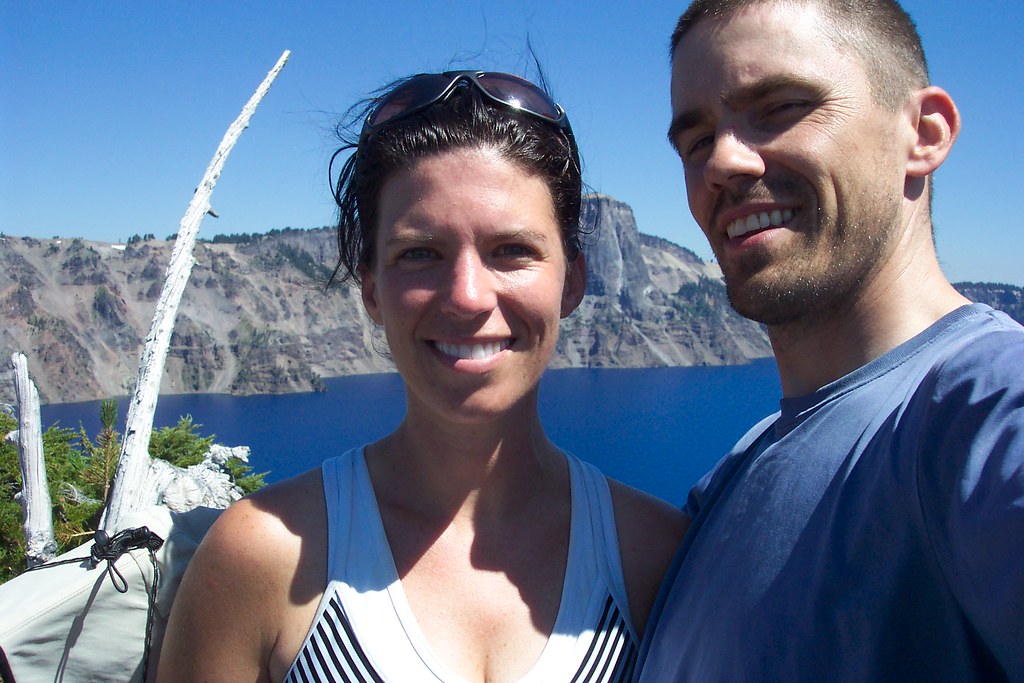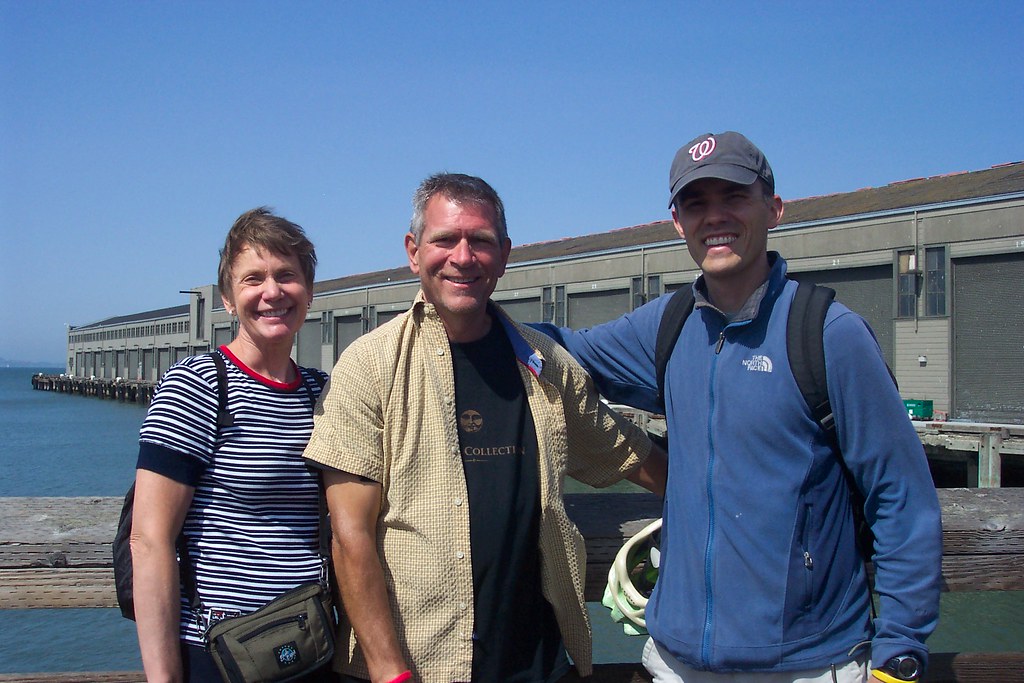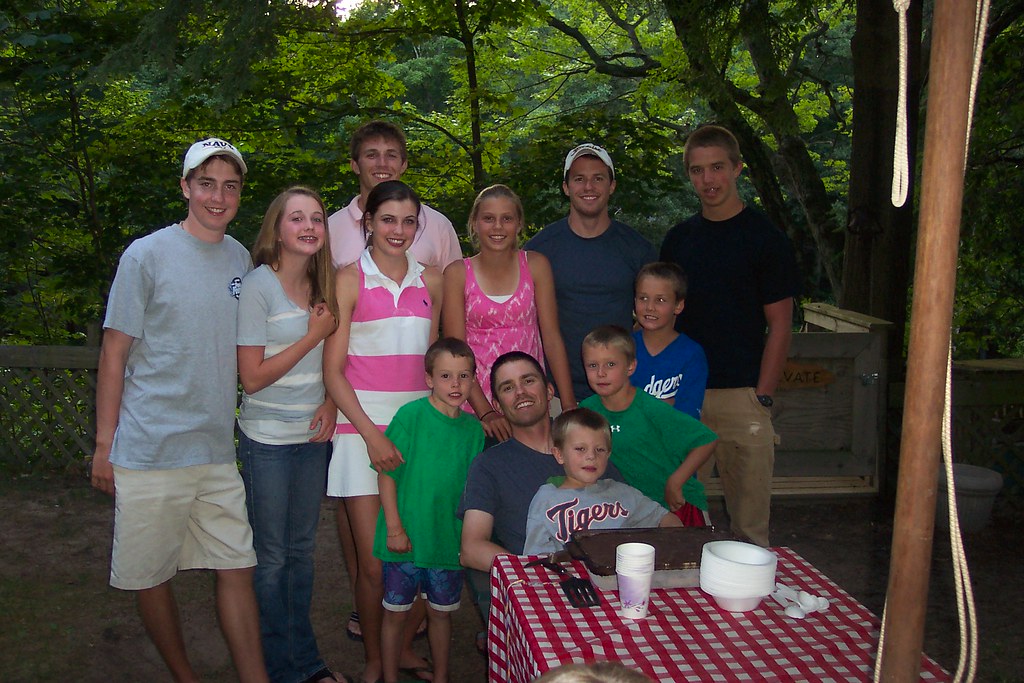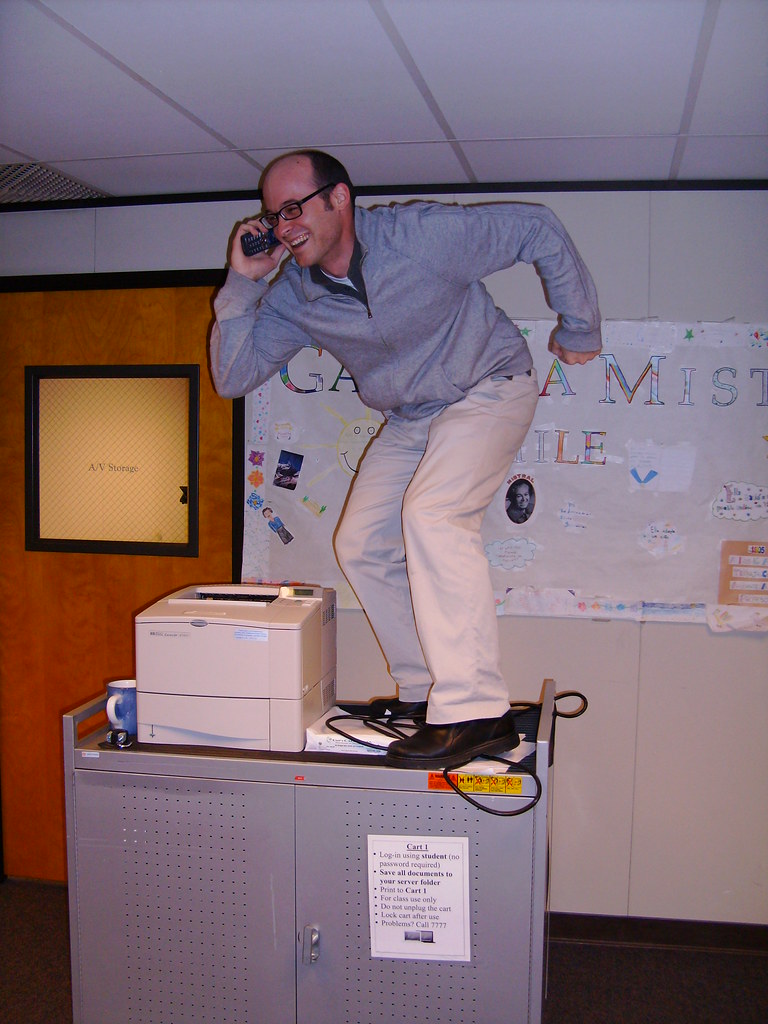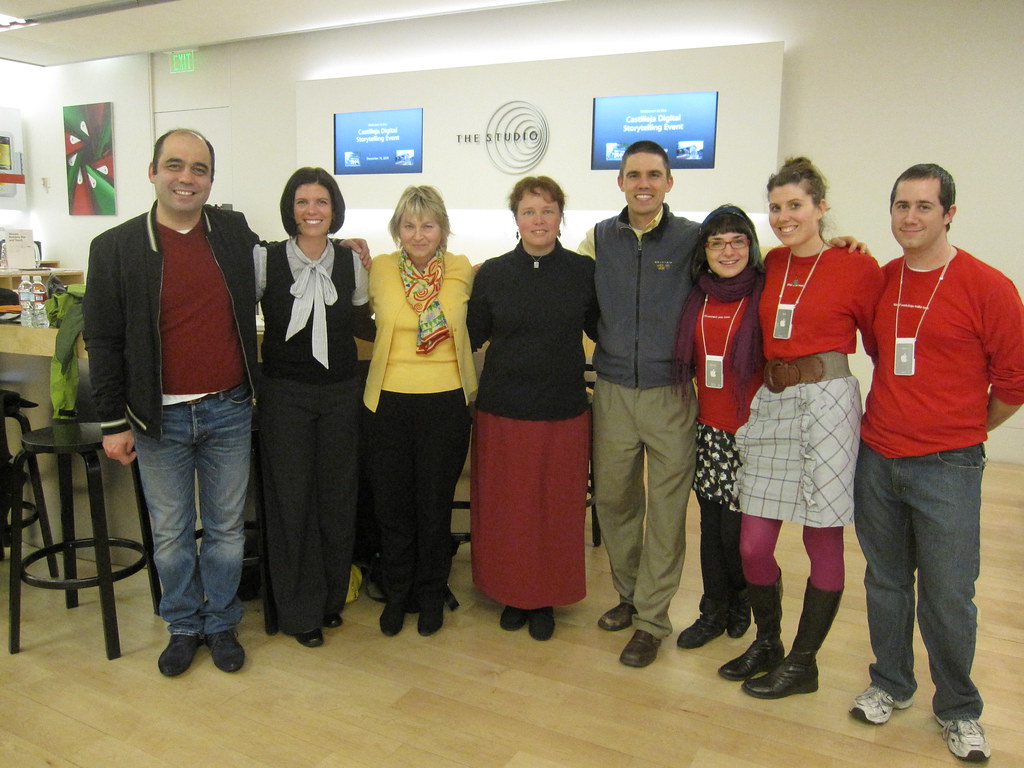I think these two graphs that Helen Barrett reposted from New Zealand educator Nick Rate's blog do an outstanding job of explaining ePortfolios in a VERY simple manner. I created a longish, boring, 8 minute video on ePortfolios that wasn't nearly as effective as these two charts. Thanks to Helen for posting and props to Nick on his fine work.
Thoughts and reflections on the world of educational technology...oh, and a few other things
Tuesday, December 22, 2009
The Perfect Student Laptop
I've been talking to several students about our school's upcoming laptop program and many are not that excited about it because they are not looking forward to carrying around a heavy laptop in addition to all of their books, binders, notebooks, and other school materials. I completely understand where they are coming from.
Considering this scenario, I think there will be a premium in the first few years of our laptop program on form factor. This convertible tablet PC from 2GOPC very well might be the best student laptop option given the fact that there will be a premium on a device that is light, durable, easy to carry, flexible, highly portable, and inexpensive.
What are your thoughts? Given that next year our students will be adding laptop computers to their already exploding backpack sizes, what computer do you think will be the "perfect" student laptop for students in grades 6-12 (ages 12-18)?
NOTE: Our laptop program is built on an open, OS agnostic model. Students and families are permitted to choose the OS and form factor (from netbook to full size laptop) that will work best for them (their system must meet a few basic minimum requirements that we've specified).
Considering this scenario, I think there will be a premium in the first few years of our laptop program on form factor. This convertible tablet PC from 2GOPC very well might be the best student laptop option given the fact that there will be a premium on a device that is light, durable, easy to carry, flexible, highly portable, and inexpensive.
What are your thoughts? Given that next year our students will be adding laptop computers to their already exploding backpack sizes, what computer do you think will be the "perfect" student laptop for students in grades 6-12 (ages 12-18)?
NOTE: Our laptop program is built on an open, OS agnostic model. Students and families are permitted to choose the OS and form factor (from netbook to full size laptop) that will work best for them (their system must meet a few basic minimum requirements that we've specified).
Saturday, December 19, 2009
My Year in Photos & Videos
As a way to reflect on my year on both a professional and personal level, I went ahead and pulled interesting photos and videos that I posted online during 2009. Where ever you happen to be in the world, I hope you and your family have a most happy start to the New Year! Thank you for taking the time to read my blog this past year.
January 2009
I started out with the best intentions of fully participating in the 365 Photo project (eg-you take a picture a day, post it online, and share it with the various 365 photo groups on flickr). I did make it nearly 100 days. However, I found that I simply couldn't keep up with this over time. Not even this shiny new Panasonic Lumix camera could keep me in the project!
February 2009
Over my February break Erin and I visited with my sister and family while they were on vacation in Park City, Utah. Here is a short little video of my cute little nephew, Jack:
March 2009
This is one of my most viewed flickr photos, which I find kind of bizarre. In this photo you'll see a 10.1" HP Netbook connected to a large display, keyboard, and mouse. This was part of some experimentation that we did with netbooks at my school. This was important work as netbooks will play an important role in our school's laptop program which will launch at the start of the 2010-2011 school year.
April 2009
This turned out to be photo number 103 in my effort to participate in the 365 Photo project. This is my cat, Bucky, and I caught him in the backyard one day sitting in this pot.
Also in April, the Earthbridges team completed another very successful 24 Hour Live broadcast on Earth Day. Below is a photo of my webcasting setup taken after the 24 hour webcast was over. Hover over the photo to see the "anatomy of a webcast":
May 2009
Erin and I visited Yosemite National Park for our very first time. Here is a short little video of our hike to the top of Half Dome:
Yosemite 2009 from Matt Montagne on Vimeo.
June 2009
Our school transitioned away from Firstclass to the much more powerful, flexible, useful, accessible, user-friendly, relevant, standards-compliant, and collaborative (oh, and did I mention FREE) Google Apps for Education platform. As luck would have it, our neighbor, a google engineer, was moving out at the same time as our transition and sold this cool lamp to me. It is now proudly on display office desk.
August 2009
August was a busy month for me. I was lucky enough to travel out to the Google Teacher academy with my teacher buddy here in the Bay Area, Derrall Garrison. Below is the video that I submitted as part of the Google Teacher Academy application process:
My former colleague and master math teacher, Joe Georgeson, and his wife, Linda, visited San Francisco for a week in August. I was able to shoot up to the city to spend the afternoon with them. Following seeing Joe and Linda, I flew to Michigan to spend time with my family. It was great celebrating my birthday with so many of my nieces, nephews, family members, and friends.
Celebrating my birthday with my nieces, nephews, and god-child in Ludington, MI:
September 2009
I attended the sophomore retreat up in the Santa Cruz mountains with my most excellent group of advisees:
October 2009
I had the good fortune to attend an outstanding conference here in the Bay Area at the Nueva School. The conference was stacked with fantastic presenters and learning opportunities. Here is a photo of a session I attended with John Seeley Brown:
November 2009
This is a photo of a co-worker of mine, Adam Contois. Together we were guest "Time-Clock" presenters for a November weekly high school meeting. The "Time Clock" is basically a five minute talk that serves as a fun way to wrap up this student assembly. We created a short little talk with pictures on the "Myths of the Technology Department." This is one of the photos that we shared.
December 2009
A small group of faculty at my school participated in a series of three workshops with Apple on the topic of "Digital Storytelling." For our final session we met at the Apple Store on University Avenue in Palo Alto and shared our projects. 'Twas great fun.
January 2009
I started out with the best intentions of fully participating in the 365 Photo project (eg-you take a picture a day, post it online, and share it with the various 365 photo groups on flickr). I did make it nearly 100 days. However, I found that I simply couldn't keep up with this over time. Not even this shiny new Panasonic Lumix camera could keep me in the project!
February 2009
Over my February break Erin and I visited with my sister and family while they were on vacation in Park City, Utah. Here is a short little video of my cute little nephew, Jack:
March 2009
This is one of my most viewed flickr photos, which I find kind of bizarre. In this photo you'll see a 10.1" HP Netbook connected to a large display, keyboard, and mouse. This was part of some experimentation that we did with netbooks at my school. This was important work as netbooks will play an important role in our school's laptop program which will launch at the start of the 2010-2011 school year.
April 2009
This turned out to be photo number 103 in my effort to participate in the 365 Photo project. This is my cat, Bucky, and I caught him in the backyard one day sitting in this pot.
Also in April, the Earthbridges team completed another very successful 24 Hour Live broadcast on Earth Day. Below is a photo of my webcasting setup taken after the 24 hour webcast was over. Hover over the photo to see the "anatomy of a webcast":
May 2009
Erin and I visited Yosemite National Park for our very first time. Here is a short little video of our hike to the top of Half Dome:
Yosemite 2009 from Matt Montagne on Vimeo.
June 2009
Our school transitioned away from Firstclass to the much more powerful, flexible, useful, accessible, user-friendly, relevant, standards-compliant, and collaborative (oh, and did I mention FREE) Google Apps for Education platform. As luck would have it, our neighbor, a google engineer, was moving out at the same time as our transition and sold this cool lamp to me. It is now proudly on display office desk.
July 2009
Erin and I went on a fairly epic car camping trip up the California coast into Oregon, over to Crater Lake, and then down through Lassen Volcanic National Park in California. Here is a photograph of Erin and I standing on the top of Wizard Island, which is a volcano in the middle of Crater Lake.August 2009
August was a busy month for me. I was lucky enough to travel out to the Google Teacher academy with my teacher buddy here in the Bay Area, Derrall Garrison. Below is the video that I submitted as part of the Google Teacher Academy application process:
My former colleague and master math teacher, Joe Georgeson, and his wife, Linda, visited San Francisco for a week in August. I was able to shoot up to the city to spend the afternoon with them. Following seeing Joe and Linda, I flew to Michigan to spend time with my family. It was great celebrating my birthday with so many of my nieces, nephews, family members, and friends.
Celebrating my birthday with my nieces, nephews, and god-child in Ludington, MI:
September 2009
I attended the sophomore retreat up in the Santa Cruz mountains with my most excellent group of advisees:
October 2009
I had the good fortune to attend an outstanding conference here in the Bay Area at the Nueva School. The conference was stacked with fantastic presenters and learning opportunities. Here is a photo of a session I attended with John Seeley Brown:
November 2009
This is a photo of a co-worker of mine, Adam Contois. Together we were guest "Time-Clock" presenters for a November weekly high school meeting. The "Time Clock" is basically a five minute talk that serves as a fun way to wrap up this student assembly. We created a short little talk with pictures on the "Myths of the Technology Department." This is one of the photos that we shared.
December 2009
A small group of faculty at my school participated in a series of three workshops with Apple on the topic of "Digital Storytelling." For our final session we met at the Apple Store on University Avenue in Palo Alto and shared our projects. 'Twas great fun.
A Culture of Innovation
I read an outstanding blog post yesterday titled, "50 Ways to Foster a Culture of Innovation." This is well worth the 10 minutes of your time to read. Pockets of innovation exist in every organization to one extent or another, but the real challenge, as I see it, is building a culture that supports systemic innovation.
The most compelling of these 50 for me are italicized below. As a self proclaimed "Fire-Ready-Aim" type, these will come as no surprise. Commentary in orange:
The most compelling of these 50 for me are italicized below. As a self proclaimed "Fire-Ready-Aim" type, these will come as no surprise. Commentary in orange:
2. Wherever you can, whenever you can, always drive fear out of the workplace. Fear is "Public Enemy #1" of an innovative culture. Couldn't agree more...nothing instills a sense of paralysis more than fear in an organization. Fear needs to be rooted out at all costs.
3. Have more fun. If you're not having fun (or at least enjoying the process) something is off. Play, fun and a sense of exploration and discovery are key ingredients in the process of innovation. I think of the fun that these Google engineers had with a fresnel lens on the roof of their office building last year. One note: Sarcasm is the lowest, cheapest form of humor-don't confuse sarcasm for play and fun.
8. Help people broaden their perspective by creating diverse teams and rotating employees into new projects -- especially ones they are fascinated by. Let's build structures and opportunities to get us out of our silos. And while we're at it, let's get rid of the silos (including the silos that are built into our electronic communications-EVERYONE in the organization needs to blog, reflect, and share).
14. Embrace and celebrate failure. 50 to 70 per cent of all new product innovations fail at even the most successful companies. The main difference between companies who succeed at innovation and those who don't isn't their rate of success -- it's the fact that successful companies have a LOT of ideas, pilots, and product innovations in the pipeline. Yes, yes, yes! We learn most from the process of making mistakes followed by a period of iteration. Celebrate the struggles!
15. Notice innovation efforts. Nurture them wherever they crop up. Reward them. Encourage risk taking and efforts to try new things. Don't do so in the annual review, but instead in simple little day to day gestures, compliments, and even comments on their reflective blog.
32. Avoid analysis paralysis. Chaotic action is preferable to orderly inaction. This is my personal favorite and speaks directly to my "Fire-ready-aim" mentality. To quote BJ Fogg, "Less talk, more action."A key omission in this comprehensive list is fostering a community of learning and unlearning. If an organization is going to be effective in building systems that support innovation, then regular, ongoing, sustained learning needs to be cultivated. Alternately, the value of unlearning can't be highlighted enough. Just because we did something five years ago doesn't mean that same mode of operandi is relevant to a similar problem (or even the exact same problem).
Sunday, December 13, 2009
1:1 Laptop Learning at Our School Next Year
 The 2010-2011 school year will be the first year that all students at my school will be required to bring a laptop to school each day. I'm excited about the model that we've selected because we are not mandating that students purchase a particular model nor are we mandating that they purchase software at this point. Students may use laptops that they already own, which is great as 60-70% of our students already own a laptop (see our 1:1 FAQ doc for the complete details on our plan-we also have some of our work posted at our 1:1 planning site).
The 2010-2011 school year will be the first year that all students at my school will be required to bring a laptop to school each day. I'm excited about the model that we've selected because we are not mandating that students purchase a particular model nor are we mandating that they purchase software at this point. Students may use laptops that they already own, which is great as 60-70% of our students already own a laptop (see our 1:1 FAQ doc for the complete details on our plan-we also have some of our work posted at our 1:1 planning site).The model that we selected gives individuals the element of choice, which I think will lead to some innovativation in and of itself. For example, some kid might choose to purchase a low cost netbook, which leaves extra money available to purchase an eReader and an inexpensive video camera. It also prevents us from locking into a particular platform and model so that when a new innovation comes out (eg, the apple tablet/eReader), we're able to consider integrating this new technology.
A thread about 1:1 learning recently circulated around the California Independent Schools Listserve (of which I'm not a member) and our head of school, Joan Lonergan, responded to a question from one school leader about our 1:1 learning plans. Joan shared her reply with me and I thought she absolutely hit the nail on the head in her description of our 1:1 learning model that we'll be deploying next year. So I asked Joan if I could republish her excellent work in this space and she obliged. Joan's answers follow and any comments that I added are highlighted below in orange.
Q: Do you have any WRITTEN policies I could review? Contracts with parents?
A: None. We have said we are initiating a 1:1 device program, issued some minimum specs that are desirable for all devices to be used in classes, and said we will support both Macs and PCs on minor repairs in school and provide low end loaners while families take care of major repairs. We have predominantly Apple platform here and an Apple store downtown so we think this will work. We already have a large majority of our students bringing computers of some sort to school with no issues about service, etc. We are now looking at infrastructure issues to make sure we have wireless and electrical capacity campus wide.
Q: What to do is computer is lost, stolen or broken?
A: We have loaners (for loaners we are using low cost, yet powerful HP 5101 10.1" Netbook computers running the Ubuntu Netbook remix-all software is free and open source)
Q: Who purchases the computer?
A: families independently, not through school
Q: Controls on what is downloaded on the computer?
A: We have a minimum expectation of software and applications should be on all student computers, but we are making a very conscious effort to use as much open source software as possible.
Q: Anything else you considered as you made this decision??
A: We have considered every option to be a 1:1 school and opted for the easiest for us and the least restrictive for our families. We are piloting this second semester so will have more to share in June. Matt Montagne is our Academic Tech person whom I have copied. You might want to touch base with him in a few months.
Sunday, December 06, 2009
Digital Storytelling Workshop Showcase at the Apple Store Palo Alto
I'm pleased that six other teachers and myself recently participated in a series of three workshops on the topic of movie making/digital storytelling. The goal of this series was to give all participants, each of whom has varying levels of experience with digital storytelling, the chance to go through the process of planning, producing, and then publishing a video of their choosing. This workshop series was facilitated by three outstanding creative consultants from the Apple Store-University Ave location in Palo Alto, California. This coming Thursday, December 10th, from 5:30-6:30 at the Apple Store in Palo Alto, the film makers who participated in this session will be sharing their finished pieces. If you are in the area, please stop by the Apple Store and join us for this event.
My video that I'll be sharing is embedded below. It is from our trip last spring to Yosemite National Park.
Yosemite 2009 from Matt Montagne on Vimeo.
My video that I'll be sharing is embedded below. It is from our trip last spring to Yosemite National Park.
Yosemite 2009 from Matt Montagne on Vimeo.
Thursday, December 03, 2009
Authentic Audience & Students as Publishers
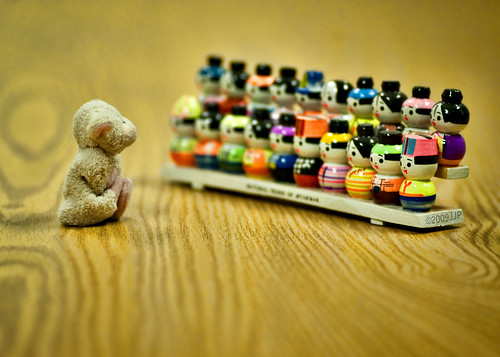 Colleague and US History teacher extraordinaire, Heather Pang, recently emailed a link to our school's academic council from a blog post by the Innovative Educator. The post is titled, "21st Century Educators don't say, "Hand it in." They say, "Publish it." This is a wonderful post on the value of students as content creators and publishers. I responded to Heather's email and the academic council with the copy below and decided it might be relevant to re-publish this email in this space.
Colleague and US History teacher extraordinaire, Heather Pang, recently emailed a link to our school's academic council from a blog post by the Innovative Educator. The post is titled, "21st Century Educators don't say, "Hand it in." They say, "Publish it." This is a wonderful post on the value of students as content creators and publishers. I responded to Heather's email and the academic council with the copy below and decided it might be relevant to re-publish this email in this space.Hop on over to the Innovative Educator's blog to leave comments and engage in the conversation centering around the topic of student publishing...
My email to Heather and our school's Academic Council:
Thanks for sharing this article, Heather. I found it to be an interesting read. Audience is something that has long been discussed as an important element of learning design-long before the Internet came around.
Whether it is a group of students presenting to the global peacedot community, AP English students sharing their mixed media essays for a wide range of folks, student athletes performing in a game, sixth graders publishing their math thinking for others to evaluate, theater students putting on a production for the community, photography students publishing their work in an authentic space, or 8th graders in wellness reflecting on the eight elements of wellness (listen to Mandi's piece if you get the chance), audience certainly has a powerful influence."
Good stuff and again, thank you for sharing this piece.
*photo courtesy of Tatooed JJ on flickr (Creative Commons license)
Subscribe to:
Posts (Atom)

